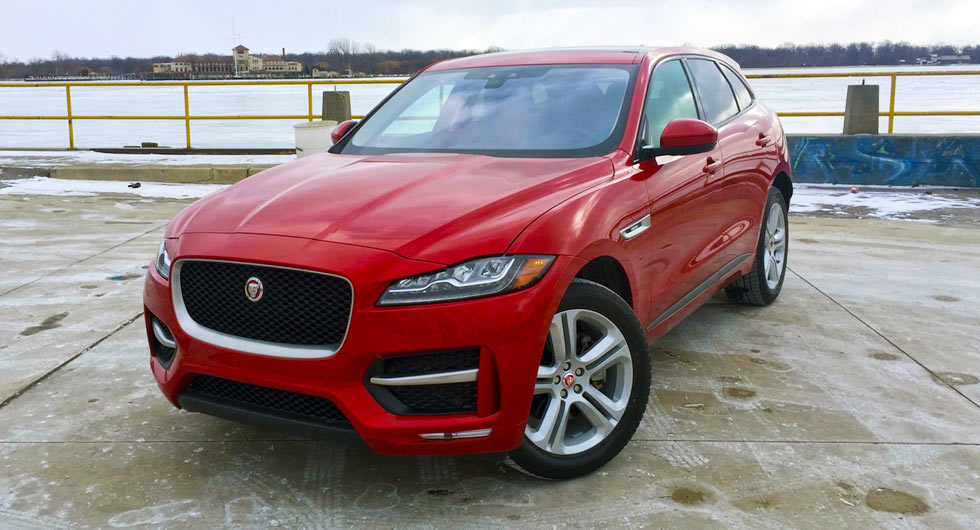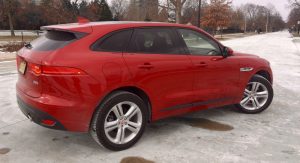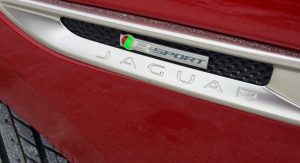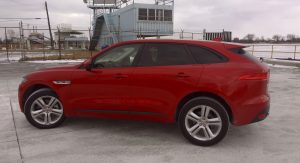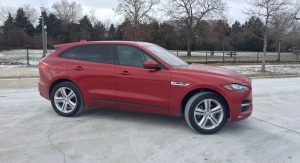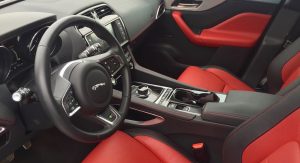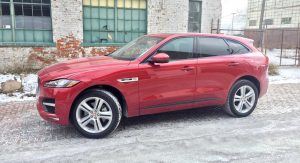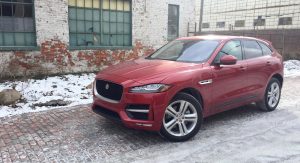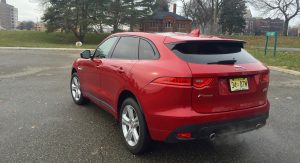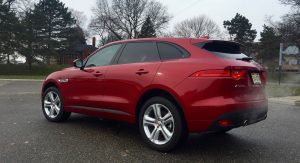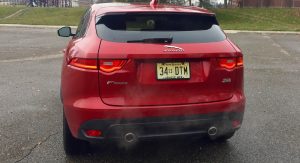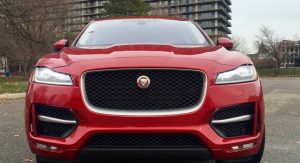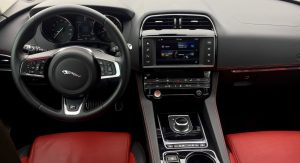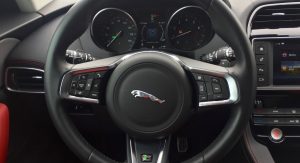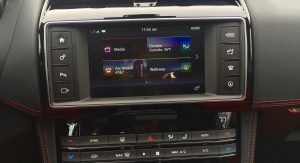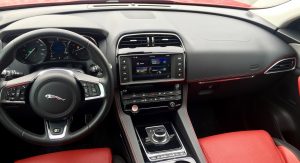No more questions about it, the SUV has very much arrived in mainstream culture.
When the Jeep Grand Wagoneer started getting gussied up, everyone sneered at its $20,000 price tag 40 years ago. When the Range Rover first landed in the U.S. 30 years ago, people gasped at its leather-lined interior and $30,000 sticker. And then 10 years later, there was the Mercedes-Benz M-Class, a $40,000 Mercedes intended to rival the Ford Explorer.
All of which brings us to the Jaguar F-Pace, the first SUV from a company that already has an entire division devoted to SUVs. It sounded silly at first, but the F-Pace is exactly the kind of SUV Jaguar would build.
Which has its pluses and minuses.
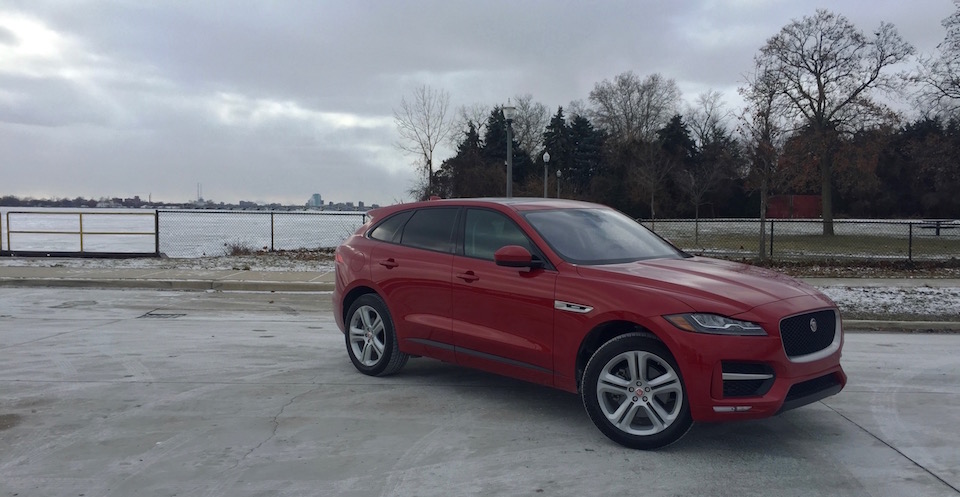
Grace over space
Make what you will over Jaguar venturing into the SUV world, but the F-Pace is, in fact, a looker. It doesn’t have to be upright, because that’s what the Land Rover division is for, and that’s to the Jag’s benefit.
Looking straight at it, the front is a little plain, but the rest of the F-Pace is well-sculpted, with careful creases and a generally attractive shape that’s carried from front to rear. Some SUVs suffer from sharp fronts that collapse into nondescript rears, but this one escapes that for the most part. Perhaps it’s the Italian Racing Red paint (a peculiar name for a Jaguar color, but OK) that makes the F-Pace look extra rakish. Also helping matters are attractive 20-inch wheels on this R-Sport model. I’ll get to why those hurt in other places later.
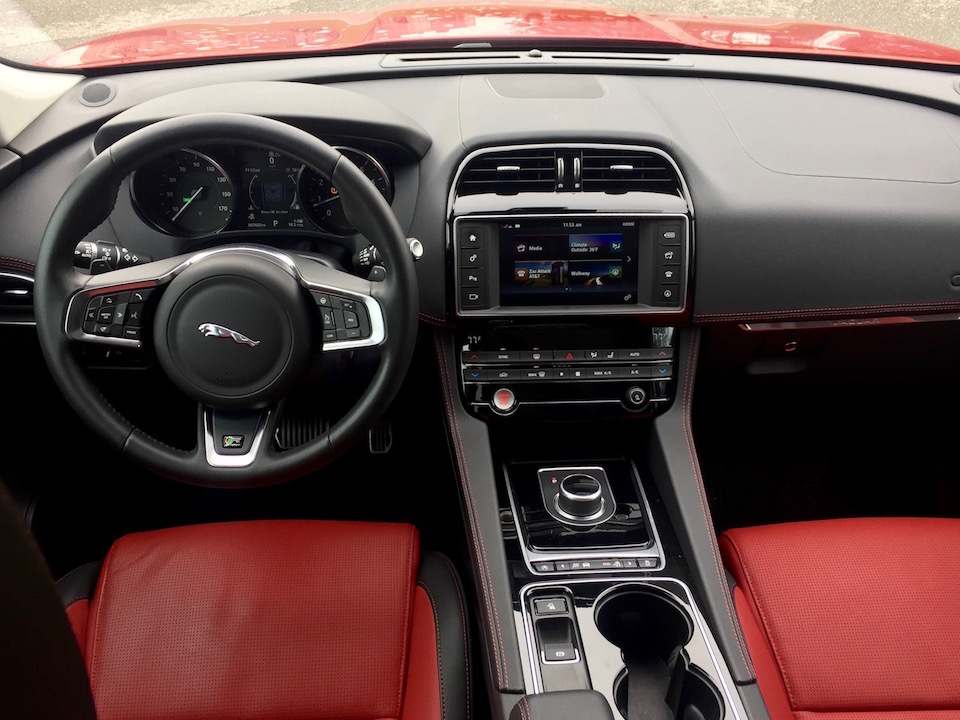
The design flourishes are toned down inside, where ergonomic compromises also come into play. Jaguar’s mainstream models have become a tad staid in the interior department, which is a problem when you have rivals from Audi and Volvo continuing to create inviting cockpits. Going for the R-Sport package does add some color to what would normally be a dark place, although the vast glass roof covers both rows of seats and let some of that January gray Detroit light in.
That’s a good thing because you don’t sit especially high up in the F-Pace and the side windows are rather shallow for an SUV. It’s a sporty driving position, for sure, but I found myself raising the seat higher than I would normally just to get a slightly commanding view of the road.
The seating position isn’t the only ergonomic quirk. Seat memory controls are where you’d expect the window switches to be, the start-stop button is where you’d expect the volume knob to be and the controls for the heated seats take a while to warm themselves up on a cold morning. At least Jaguar’s new touchscreen is a vast organizational improvement over the previous iteration, even if it isn’t the last word in sophistication.
Thing is, if you’re looking at this F-Pace to be the last word in practicality and technological achievements, you’re missing the point.
Pace is the trick #jaguar #JaguarFPace #Detroit A post shared by Zac Estrada (@zacestrada) on Jan 8, 2017 at 10:46am PST
Bursts and bumps
Holy. Crap. This thing is quick.
The F-Pace 35t, a 2017 World Car of the Year finalist, with its 3.0-liter V6 with 340 supercharged horses gets up and going in a hurry. And this isn’t even the top banana: a 380-horsepower version of the engine is the most powerful F-Pace at the moment. Even in its quietest setting, the F-Pace also growls as if there’s a little bit of the F-Type sports car trying to escape the SUV pragmatism. Put it in the most sporting setting and it suddenly makes everyone aware there’s something angry driving by.
That’s all well and good if you’re on a highway or a nice road, but it gets tiresome when you just want to go 25 mph down your street. The F-Pace doesn’t do town speeds, so you may become fast friends with your local traffic enforcer. Obviously, the 2.0-liter turbodiesel four is the way to go if you plan on driving your F-Pace mostly in town.
Opting for a non-R-Sport model also gets you smaller wheels, which might help the jarring ride. It didn’t help that my experience was on Detroit’s cracked pavement, but the F-Pace’s ride never settled down and the big wheels clomped over every surface – to the point that my three passengers at one point had to note how stiff and choppy the whole experience was. Those expecting a relaxing Jaguar experience like the one you get in an XJ sedan will be disappointed. Those who wish their F-Type could fit the family, however, will understand.
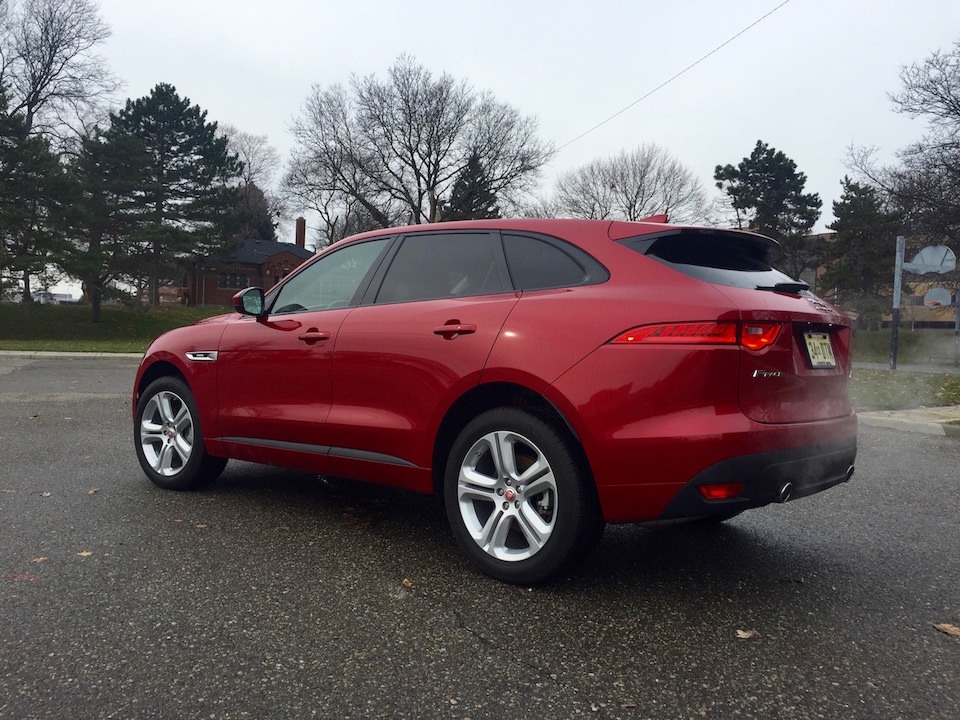
Hot thoughts
And if you fall into that latter camp, the as-tested $69,000 price tag for this F-Pace seems reasonable when you consider what a Porsche Macan S costs, or even a well-equipped Mercedes-AMG GLC43. Knock off some of the more opulent extras and the F-Pace 35t can be had for less than $60,000, a bargain.
Think about the level of performance and the number of smirk-inducing stoplight launches you could make with it and one could make a case for picking an F-Pace over the vast selection of more staid alternatives. At times, the F-Pace seduces you like a Jaguar should.
Then your brain kicks in again. The Germans, however, do better interior quality and even the stiff-legged Mercedes sometimes feels more composed than the Jaguar. And lots of other similarly luxurious and sized SUVs do the everyday driver thing better, too.
As much as the F-Pace frustrates, however, it’s on the right track by at least admitting it isn’t the most practical car among its peers or the one to make you feel tough and off-roadish. It’s a sports car that happens to resemble an SUV.
A little more refinement and it could make life for the luxury sport sedan even more difficult.
Photos: Zac Estrada/Carscoops



